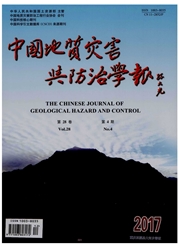

 中文摘要:
中文摘要:
This paper presents a comprehensive review of modeling of alkali-silica reaction (ASR) in concrete.Such modeling is essential for investigating the chemical expansion mechanism and the subsequent influence on the mechanical aspects of the material.The concept of ASR and the mechanism of expansion are first outlined,and the stateof-the-art of modeling for ASR,the focus of the paper,is then presented in detail.The modeling includes theoretical approaches,meso-and macroscopic models for ASR analysis.The theoretical approaches dealt with the chemical reaction mechanism and were used for predicting pessimum size of aggregate.Mesoscopic models have attempted to explain the mechanism of mechanical deterioration of ASR-affected concrete at material scale.The macroscopic models,chemomechanical coupling models,have been generally developed by combining the chemical reaction kinetics with linear or nonlinear mechanical constitutive,and were applied to reproduce and predict the long-term behavior of structures suffering from ASR.Finally,a conclusion and discussion of the modeling are given.
 英文摘要:
英文摘要:
This paper presents a comprehensive review of modeling of alkali-silica reaction (ASR) in concrete. Such modeling is essential for investigating the chemical expansion mechanism and the subsequent influence on the mechanical aspects of the material. The concept of ASR and the mechanism of expansion are first outlined, and the state-of-the-art of modeling for ASR, the focus of the paper, is then presented in detail. The modeling includes theoretical approaches, meso- and macroscopic models for ASR analysis. The theoretical approaches dealt with the chemical reaction mechanism and were used for predicting pessimum size of aggregate. Mesoscopic models have attempted to explain the mechanism of mechanical deterioration of ASR-affected concrete at material scale. The macroscopic models, chemomechanical coupling models, have been generally developed by combining the chemical reaction kinetics with linear or nonlinear mechanical constitutive, and were applied to reproduce and predict the long-term behavior of structures suffering from ASR. Finally, a conclusion and discussion of the modeling are given.
 同期刊论文项目
同期刊论文项目
 同项目期刊论文
同项目期刊论文
 期刊信息
期刊信息
